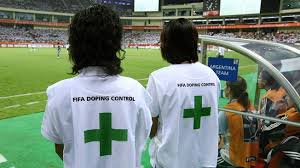By David Owen
October 27 – A total of 168 urine samples provided to drug testers by footballers resulted in adverse analytical findings (AAFs) in 2016, the World Anti-Doping Agency (WADA) has revealed.
This equated to about 0.5% of all anti-doping samples taken in the sport, including its futsal and beach football variants. Football once again provided more samples – 33,227 – than any other Olympic sport. The figures are taken from WADA’s newly-published 2016 Testing Figures Report.
Breakdowns in the over 300-page document reveal that none of more than 1,700 blood samples provided by footballers resulted in either an AAF or a so-called atypical finding.
The report also shows that only 21% of footballers’ urine samples – 6,538 – were taken out-of-competition. This was exactly half the average of 42% for Summer Olympic sports as a whole. Out-of-competition testing is held by many to be more effective.
Anabolic agents were the commonest drug class reported from football-related samples (75 instances), followed by stimulants (42 instances) and glucocorticosteroids (29 instances).
Not all AAFs result in an offence, and therefore a sanction. Equally, individual athletes could conceivably give rise to more than one AAF.
Contact the writer of this story at moc.l1713477053labto1713477053ofdlr1713477053owedi1713477053sni@n1713477053ewo.d1713477053ivad1713477053

